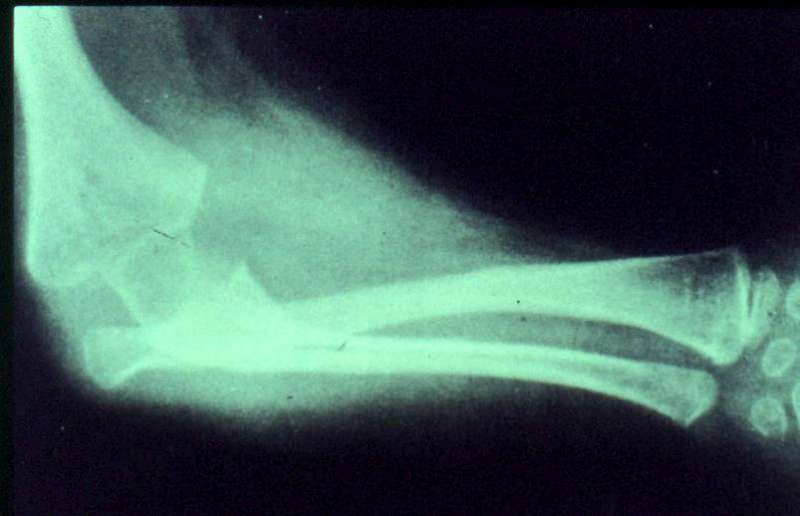Congenital Radial Head Dislocation: Essential Information
Congenital dislocation of the radial head is a condition characterized by a unilateral or bilateral dislocation of the radiocapitellar joint. Unlike traumatic dislocations, this condition is not associated with any known trauma and is instead characterized by dysmorphic changes in the capitellum and radial head. The exact cause and genetic factors involved are still unknown, although it is associated with other skeletal dysplasias in about one-third of cases. The incidence of this condition is also unknown.
Clinical Evaluation
Children with congenital radial head dislocation typically present with a painless loss of full elbow extension and forearm rotation. Older children may experience clicking in the joint, and a prominence may be visible in the lateral aspect of the elbow. Imaging studies, such as plain radiographs, can confirm the diagnosis by revealing the dysmorphic radiocapitellar dislocation and characteristic joint abnormalities, including a hypoplastic capitellum, abnormally shaped radial head, and excessive bow to the proximal radius.
Differential Diagnosis and Classification
Congenital radial head dislocation should be distinguished from traumatic dislocation based on the absence of significant trauma to the extremity and the presence of dysmorphic radiographic changes. Classification schemes for this condition are based on the direction of dislocation, with posterolateral dislocation being the most common.

Treatment Options
Treatment options for congenital radial head dislocation depend on the severity and timing of presentation. In cases of early presentation during infancy with mild deformity of the radial head and capitellum, surgical intervention can involve radial head reduction through osteotomy of the radius and annular ligament reconstruction. Late presentation may require radial head excision. Conservative management through observation is also an option for patients with minor limitations of elbow motion and minimal pain.
Outcomes and Potential Complications
The prognosis for patients undergoing conservative care is generally favorable, with most patients experiencing minor limitations in elbow motion and minimal pain. Surgical care outcomes depend on the success of radial head reduction, with good outcomes if the reduction is maintained and fair to poor outcomes if the reduction fails. Radial head excision generally leads to good outcomes, although some cases report wrist pain if migration of the proximal radius occurs.
Epidemiology and Anatomy
Congenital radial head dislocation is a rare condition, with an incidence of less than 1 per 100,000. Posterior dislocation is the most common, followed by anterior and lateral dislocation. Bilateral involvement is observed in the majority of cases. The pathoanatomy typically involves posterior dislocation of the radial head, often accompanied by bowing of the radius. Patients may also have concurrent congenital anomalies.
Treatment Options and Considerations
Nonoperative management through observation is the first line of treatment for congenital radial head dislocation. Surgical intervention, specifically radial head resection, is typically considered in adulthood if the patient experiences significant pain, restricted motion, or has cosmetic concerns about their elbow. Radial head resection can help reduce pain and may improve some elbow range of motion.

